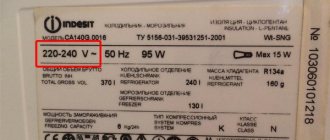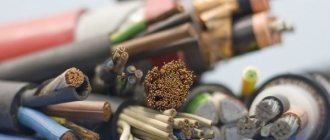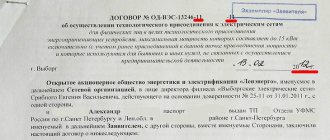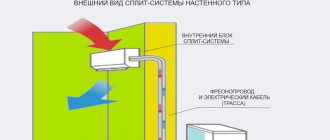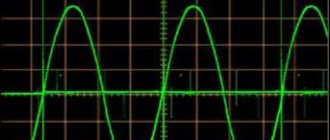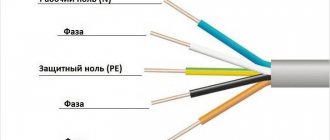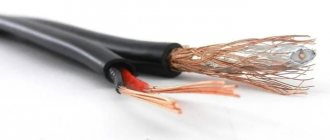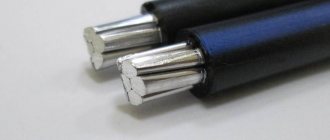Inverter welding at home is a universal tool for which practically nothing is impossible. You need to weld a wicket, gate, greenhouse frame or foundation piping - no problem. A compact, easy-to-use inverter will cope with all tasks. It can be used by both an experienced welder and a beginner in this matter.
To do this, it is enough to provide the equipment with a power supply of 220 Volts. It is good when a single-phase network is connected to the site. What to do when there is no electricity? How to perform work on a new building or in the field? A generator designed for welding equipment will help out.
How to choose a gas generator for inverter welding
In order not to make a mistake in choosing, you do not need special knowledge or many years of experience. It is enough to pay attention to just a few parameters, namely:
- what devices the generator is compatible with;
- its power consumption;
- what diameter electrodes the energy source is designed for;
- maximum inverter current.
The power consumption of the generator and the current strength of the inverter are interrelated characteristics. But regarding compatibility, you should carefully choose the type of electricity source. The retail network offers synchronous, asynchronous and inverter models. A special place is given to hybrid installations, which can operate in two modes - synchronously and asynchronously.
At first glance, it may seem that the choice is more than obvious: after all, the list includes inverter models. But this is not true. A synchronous gasoline generator or hybrid is suitable for the inverter as a power source. The fact is that they have a large power reserve and are designed for high inrush currents.
Why gasoline and not diesel, of which there are also many on the market? Yes, gasoline models produce more expensive electricity, but they work much better at low power levels. And the range of gasoline models is much wider, which will allow you to choose the best option that can be used for other purposes.
If you need to choose a generator for a professional-level welding machine, for example, for a semi-automatic machine, then you should think carefully. The problem is that semi-automatics don't always work well. Conscientious manufacturers directly warn about this in their instructions. Therefore, you should not rely on your own intuition, but should consult a consultant in the store.
Review of popular models
Model Hammer GNR2000i
Hammer GNR2000i
- Type - power plant;
- Engine - petrol;
- Phases - single-phase;
- Generator type: synchronous;
- Power - 2 kW.
The Hammer GNR2000i gasoline inverter generator with a manual drive and a 5.7-liter tank capacity provides uninterrupted power for 4.5 hours. This device can be installed at the dacha or in country cottages.
In case of unplanned power outages, the portable station will heat the room, provide lighting and provide consumers with the necessary amount of energy for domestic needs. The price of the Hammer GNR2000i petrol inverter generator is 23,596 rubles.
DDE device DPG1101i
DDE device DPG1101i
- Type - power plant;
- Engine - petrol;
- Phases - single-phase;
- Generator type: synchronous;
- Power - 0.8 kW.
This manually operated station with a 2.6-liter tank capacity provides electricity for five hours. The model is perfect for installation in country cottages and providing summer residents with autonomous electricity during unexpected power outages.
The disadvantage of the DDE DPG1101i gasoline inverter generator is the lack of a noise-insulating casing, which does not allow it to be installed directly in living rooms. The price of the device is 8,150 rubles.
Model Hyundai HY 2000 SIHyundai HY 2000SI
- Type - power plant;
- Engine - petrol;
- Phases - single-phase;
- Generator type: synchronous;
- Power - 2 kW.
This model of inverter gas generator for gas boilers with manual drive and a tank volume of 4.5 liters provides the circulation pump with power for up to 5.5 hours. A stable supply of high-quality current maintains the functionality of the boiler for a long time and ensures uninterrupted operation of the heating system in the house.
In addition, the power of this inverter gas generator is enough to provide lighting and power to household electrical appliances (TV, hair dryer). To connect large household appliances (refrigerator, washing machine), a device with higher power ratings is required - for example, an inverter gas generator up to 3 kilowatts.
What to look for when choosing
Power
What characteristics should you use to choose a quality device? First of all, you need to determine the purpose of the device: what it will be used for. If you need to connect only a couple of household appliances and a few light bulbs, you need to choose a gas generator of appropriate power: no more than 2 kW. Such devices do not weigh much, and they can be taken on a hike or installed in the countryside.
, medical equipment or pump are chosen with high power characteristics: from 5 kW. Such devices are heavy and are often equipped with wheels for ease of movement. They are capable of providing energy to a large number of current consumers.
Type of current
Power consumers differ in the quality of the current consumed: single- or three-phase. Low (single-phase) power consumption devices include household appliances. Three-phase power is required for such devices as a concrete mixer, compressor, electric boiler and others.
Control type
The type of control of a gasoline inverter generator is of no small importance. What is better - automatic or manual drive? Manufacturers offer several options for controlling power plants: manual, semi-automatic, automatic
In addition, combinations such as manual control from a remote control have been developed. The choice will be up to the consumer. The cheapest option is manual.
Synchronous or asynchronous
Synchronous inverter gas generators produce current with better characteristics and are resistant to short-term network overloads. It is recommended to buy such devices when connecting equipment with high starting current values, as well as household appliances, microwave ovens, etc.
Asynchronous devices cannot cope with high loads, but they can withstand short circuits. It is recommended to buy this equipment for all types of heating appliances: electric stoves, lamps, etc.
How to choose generator power for a welding inverter
A prerequisite is the fact that the power of the electricity source must be 20-30% greater than that of the inverter. This is important not only for stable operation of the arc, but also for optimal use of the resources of the generating plant. It is undesirable to operate a source of electricity at the limit of its potential. That is why it is necessary to make a power reserve so that the equipment generates energy in a gentle mode. In this case, the welder will receive a stable arc, and the generator will last for a long time without problems.
For clarity, let's look at a simple example. Let's say there is an inverter that can generate current up to 180 Amps. In this case, taking into account the required power reserve of up to 30%, it is recommended to buy a 6-6.5 kW generator. Using this information as a source, you can independently determine the desired equipment performance.
Generator classification
Many people, when choosing which generator will power an inverter welding machine, pay attention only to its power, but there are other important characteristics. Among them:
- Engine's type;
- Type of welding current;
- The magnitude of the current on the generator;
- Availability of additional functions and characteristics.
The most popular are the two types of internal combustion engines that are used here. The first is a gasoline generator, which is very easy to maintain and is not difficult to repair. It can be used over a wide temperature range
One very important practical benefit of this product is its unpretentiousness to fuel quality
Gasoline generator for welding
The second type of engine is diesel. It is more designed for intensive and long-term work. Gas generators can also be used, but they have not gained widespread popularity due to the complexity of operation and problems with fuel supplies.
Diesel generator for welding
The best generators in an affordable price segment
To simplify as much as possible the task of choosing a generator with optimal characteristics for a specific inverter, below are descriptions of the four models most in demand among different categories of buyers for use in domestic conditions. This is in no way a review or rating of models. This is most likely a small list of installations that have been tested and shown to work well as household equipment.
Electric generator Huter DY6500L
A very good assistant for the amateur welder. A power of 5 kW is enough to connect a small inverter that generates a current of up to 150 Amps. The synchronous model runs on gasoline. For normal operation and safe long-term operation, it is recommended to fill with gasoline of at least grade AI-92. In addition to gasoline, the unit can also operate on propane. The filling tank capacity is 22 liters.
The Huter DY6500L starts with a manual starter. Forced air cooling of the engine is provided. If you need to move the generator, the effort of one person is not enough: its weight is 80 kg.
Petrol generator Brima LT 8000 B
To provide electricity to the inverter, it is recommended to purchase this model from a well-known German brand. Its rated power is slightly higher than that of the model discussed above, and is 6 kW. At peak loads it will be able to produce more - 6.5 kW. But do not forget that the generator can only be operated at maximum performance for a short period of time. The model is suitable for those welders who have a welding inverter in their household that produces up to 180 Amperes.
The fuel consumed is gasoline. Equipped with a 25 liter filling tank. The 190F's reliable four-stroke powerplant features forced air cooling. It starts with a starter and can operate continuously for up to 8 hours. After this, a short break is required to cool the case. Otherwise, overheating is inevitable.
The generator has standard dimensions for installations of this level. His weight is 83 kg. But moving it is not difficult at all, since the body is mounted on a wheelbase.
Gasoline generator Ergomax ER 5400
Low-power model with a performance of up to 4.5 kW. It will be the best option for those who have simple welding up to 140 Amps. For operation, gasoline of at least grade AI-92 is used. The better quality gasoline is poured into the tank, the longer the generator will operate without repairs. It is characterized by efficiency: it uses approximately 2 liters of gasoline per hour.
It starts with a kick starter, autostart is not provided. Among the advantages are compact sizes. This is the smallest generator of all those discussed here.
The dimensions of the installation are 82x54x58 cm, and the weight is 70 kg. It can be stored in an unheated room, well protected from moisture and dust.
Specifications for selection
In addition to general parameters and characteristics, there are specific indicators that must be taken into account when solving the problem of which generator is needed for a welding inverter.
Particular attention should be paid to the following:
- Gasoline generator power reserve. This data is displayed in the technical documentation of the device. When purchasing, this figure should be 25-50% higher than the power of the inverter. If the generator is constantly working at the limit, it will quickly become unusable and will not allow the welding equipment to be used at full capacity. The stock made will make it possible to fully unlock the potential of the inverter, and all units will significantly increase their service life.
- Welding current. Adjustments and limitations of this indicator to certain acceptable values allow the use of a gas generator with less power than that of an inverter. For example, a 4 kW unit provides welding with a current of 136 A, without any noticeable loss of quality. But, naturally, the capabilities of such a device as a whole will be significantly limited.
- Diameter of electrodes. This parameter must be in full compliance with the minimum generator power. For example, a 2 mm electrode can work normally with a minimum power of 2.5 kW, 3 mm corresponds to 3.5 kW, 4 mm corresponds to 4.5 kW, etc. Thus, if you plan to weld with a 4 mm electrode, you will need a generator with a power of 4.5 kW or more.
Types and features of generators
Generators running on gasoline are mainly used as a backup source to supply electricity to any objects or, if necessary, to carry out field work with power tools that cannot be connected.
Gasoline generators for welding are designed for temporary operation (for several minutes or hours). If you need to work for a long time without breaks, it is better to get a diesel generator.
Gasoline generators for summer cottages and recreation - this type of generators is the most popular among buyers. The stations can produce power from 0.7 to 5 kilowatts, and are quite easy to transport.
Gasoline generators for welding machines - a variety with a power of 5 to 10 kilowatts. They are well suited for intensive work for 8 hours. It is very important to know the engine manufacturer so as not to end up with an option that will make its shortcomings known within a month. An important parameter is the size of the fuel tank and the presence of a sound insulation casing and the ability to start the generator with an electric starter.
Scheme and structure of the device
Modern overhead valve generators can be compared with diesel ones in terms of the quality of the energy released. The units can provide very high performance while minimizing noise, and are compact and durable. It is advisable to buy this generator for welding if you plan to carry out work on a construction site or power a welding machine that periodically requires a powerful flow of energy.
A gas generator with a welding function for a cottage or enterprise produces power from 10 to 20 kilowatts. They are equipped with automatic start and are used as a stationary installation.
Requirements for a generator for welding
Of course, in addition to power, when choosing a generator for welding, it is recommended to take into account other nuances:
- It is best to use a generator with a synchronous alternator for welding, the winding of which will be made of copper wire;
- If the generator will be used frequently and for a long time, then it is best to choose a model with a diesel engine;
- When choosing a generator for welding, you should always make a 20-30% power reserve.
Well, a few words about the inverter itself, which will operate from the generator. For welding with 2-3 mm electrodes, an inverter with a maximum welding current of 160 Amps is sufficient.
It’s just great if the inverter is able to operate in reduced voltage mode. This function of the welding inverter is called PFC (Power Factor Correction). Also, the efficiency value of the welding inverter must be more than 0.7.
Source
Rules of care
The most popular models of gas generators - with two-stroke air-cooled engines - require virtually no maintenance. You just need to carefully monitor the cleanliness of all exposed parts (especially the radiator fins). Before each start-up of a generator of any design, it is imperative to check the serviceability of the fencing device (shields and boots). Check the presence of all fastening elements and the tightening force of the screws (nuts)
Pay attention to the condition of the insulation of wires and electrical terminals
It is necessary to regularly check the oil level in the engine crankcase. To top up, you need to use oil strictly of the brands recommended by the manufacturer of the gasoline engine. Cheap and compact generators are usually started manually.
To start the motor of heavy and powerful welding generators, an electric starter motor is used. For such units, you need to monitor the battery charge level. In addition, the starting battery gradually becomes unusable and, as capacity is lost, requires replacement. In any case, since the exhaust gases of a gasoline engine are harmful to human breathing, it is best to use welding generators outdoors. In this case, it is necessary to provide protection from rain and snow. If you have to operate the gas generator indoors, you need to provide good ventilation.
Remember that 220 V electricity is dangerous to life! Always check the quality of the insulation of the welding inverter and the serviceability of electrical appliances (sockets, extension cords). Working in the rain or in rooms with high humidity is completely unacceptable.
In the next video you will find a brief overview of the FORTE FG6500EW gasoline welding generator.
